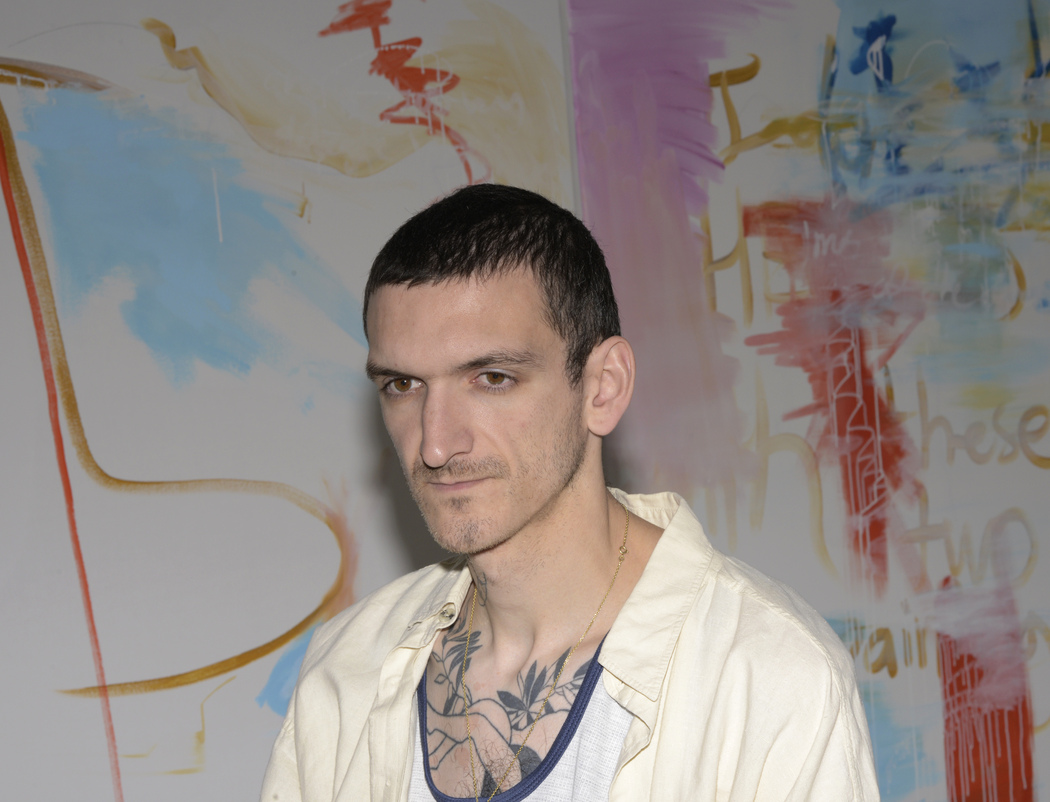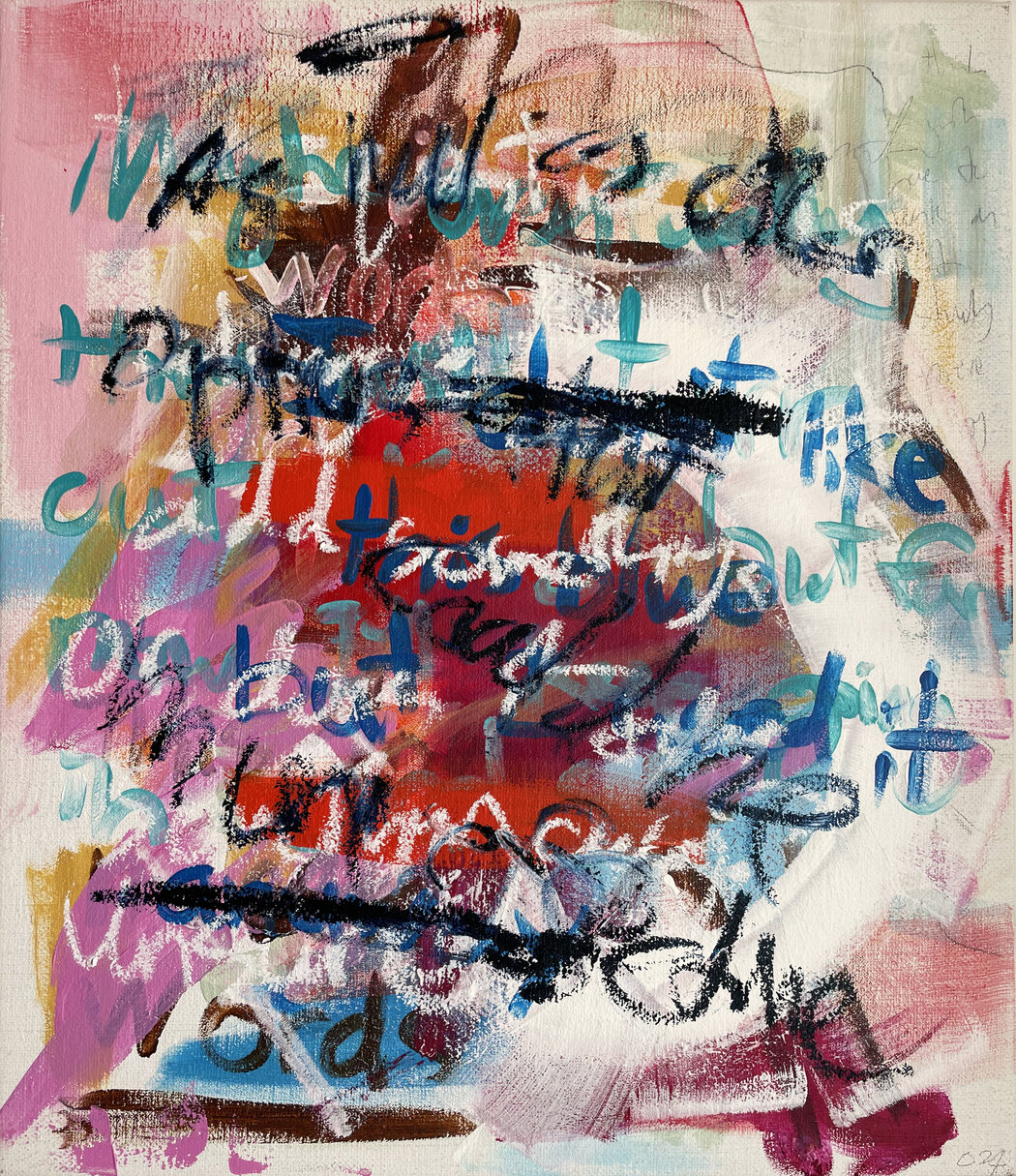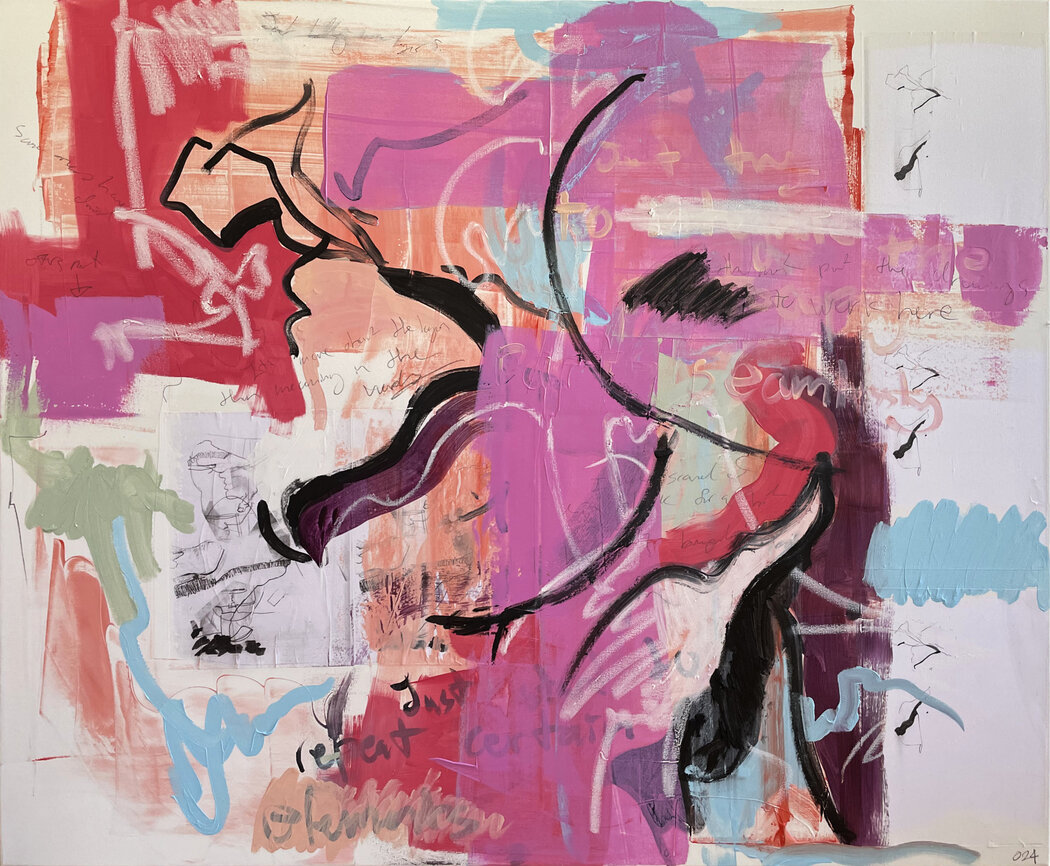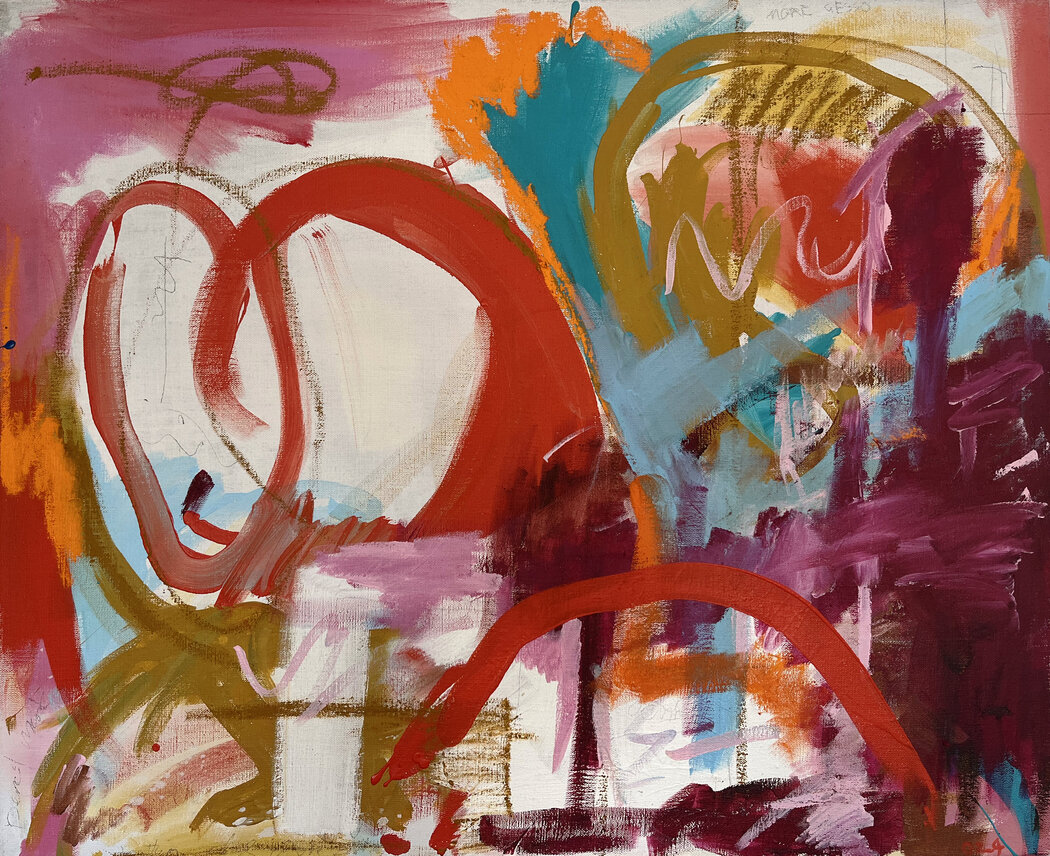George Oates
George Oates (b. 1993 Wellington, Aotearoa New Zealand) lives and works in Berlin since 2017.
Website | Instagram

Can you describe your approach to layering in your work? How does it relate to the themes of communication and expression?
I think my interest in layering comes from the ways that we as people interact in the world. I think communication, for a start, works on so many different levels simultaneously, apart from just the words that are coming out of our mouths. Our insecurities cause us to react and colour our communication in ways we are not even always conscious of in the moment; we communicate with body language, with inference, with subtext. Even knowing yourself is a lifelong journey that will never completely be answered. I think layers are intrinsic to every aspect of being human, I suppose. I think we often default to simplistic readings of people, whereas in reality we are incredibly complex.
How has your background and childhood influenced the themes you explore in your art, particularly the indirect forms of communication?
I was raised in the Anglo-influenced side of New Zealand culture and I think the particulars of this culture have had a lasting effect on my life. I’ve always said that communication in Anglo culture, both in Britain and in the colonies, is the art of talking about everything except the thing you’re trying to say. People don’t die – they “pass away”, you don’t ask someone to pass the salt, you ask “if they wouldn’t mind”. It’s a way of avoiding feelings, a faux-politeness in the place of genuine and authentic interactions. I grew up in a house where nothing was said explicitly, rather communicated through shame and unwritten rules. Disapproval was the biggest teacher, much more potent when wordless than being verbally told off. This subject is definitely one of the most tangible connections from my personal life to the layers I use in my artwork and it’s one I find endlessly fascinating.
 George Oates, Dont Like This Blue, 2024
George Oates, Dont Like This Blue, 2024
What role do words play in your paintings, especially when they are partially obscured or crossed out?
Text for me is primarily a visual element, a visual aspect of the painting, rather than the focus necessarily being on the meaning of the words themselves. That being said, I am of course aware that by including text in my paintings, it’s also going to be read. The words are often my thoughts at that exact moment in time, added while painting, rather than pre-planned or taken from another source. Sometimes I comment on the painting I’m currently making, a line, a colour, a feeling. I obscure or cross out words when I feel they aren’t working, or are no longer relevant to what the painting has become.
In your paintings, some elements appear and disappear. Do these visual shifts represent specific moments or emotions in your life?
I paint very intuitively, I don’t plan what is going to appear or where I’m going to go, I discover these things in the process of working. Visual elements of my paintings don’t generally refer to specific moments or emotions, at least not intentionally.
 George Oates, Pink Purple Black, 2024
George Oates, Pink Purple Black, 2024
How do you feel about the interaction between textures and words in your paintings? Do you aim for harmony or tension between these elements?
I think how I feel about this is actually already present in your question – I think the balance between a kind of harmony and tension is actually a key element in all facets of my work. I think the thing I constantly search for while I work is the perfect balance between all the different elements, words and textures being two of those elements. I try to find what I think the painting needs at that moment.
How does living and working in Berlin influence your art? Have you noticed any changes in your style or themes since moving here?
I think it’s influenced my art in the sense that it’s let me make it, ha… Ten years ago I lived in London, which I loved, it was so creatively stimulating, but it was impossible for me to be an artist, I only had time to work a job. I had no time or money to paint. Berlin is more expensive than it was but is, I think, still a completely different experience than trying to be an artist in Paris, London or Milan, for example. New Zealand can also be socially conservative and provincial in a lot of ways, people don’t think being an artist is a “real job” (whatever that means), rather something for eccentrics and outcasts, so having art be something that’s considered a valued and normal part of society here is definitely refreshing. I don’t know if Berlin has really influenced my style or themes per se, but being here has allowed me to work regularly and thoroughly develop bodies of work to a point I wouldn’t have been able to otherwise.
Can you elaborate on your choice of colors, particularly your use of blue and red in many of your works? Do these colors hold specific meanings for you?
My use of colour is something I do very intuitively. I can’t say exactly where it came from, but it’s been a constant feature of my work for as long as I’ve been painting, regardless of the subject matter. I think I find colour very expressive, it’s just something I’m drawn to. The colours don’t have specific meanings or symbolism for me, rather they just fit with the painting that I’m working on. I often start paintings with a colour, rather than an idea or concept, and work from there. I don’t consciously plan out specific colours for paintings, rather see where the painting takes me, what I feel like it needs to keep going.
 George Oates, Two Red Loops, 2024
George Oates, Two Red Loops, 2024

Leave a Reply